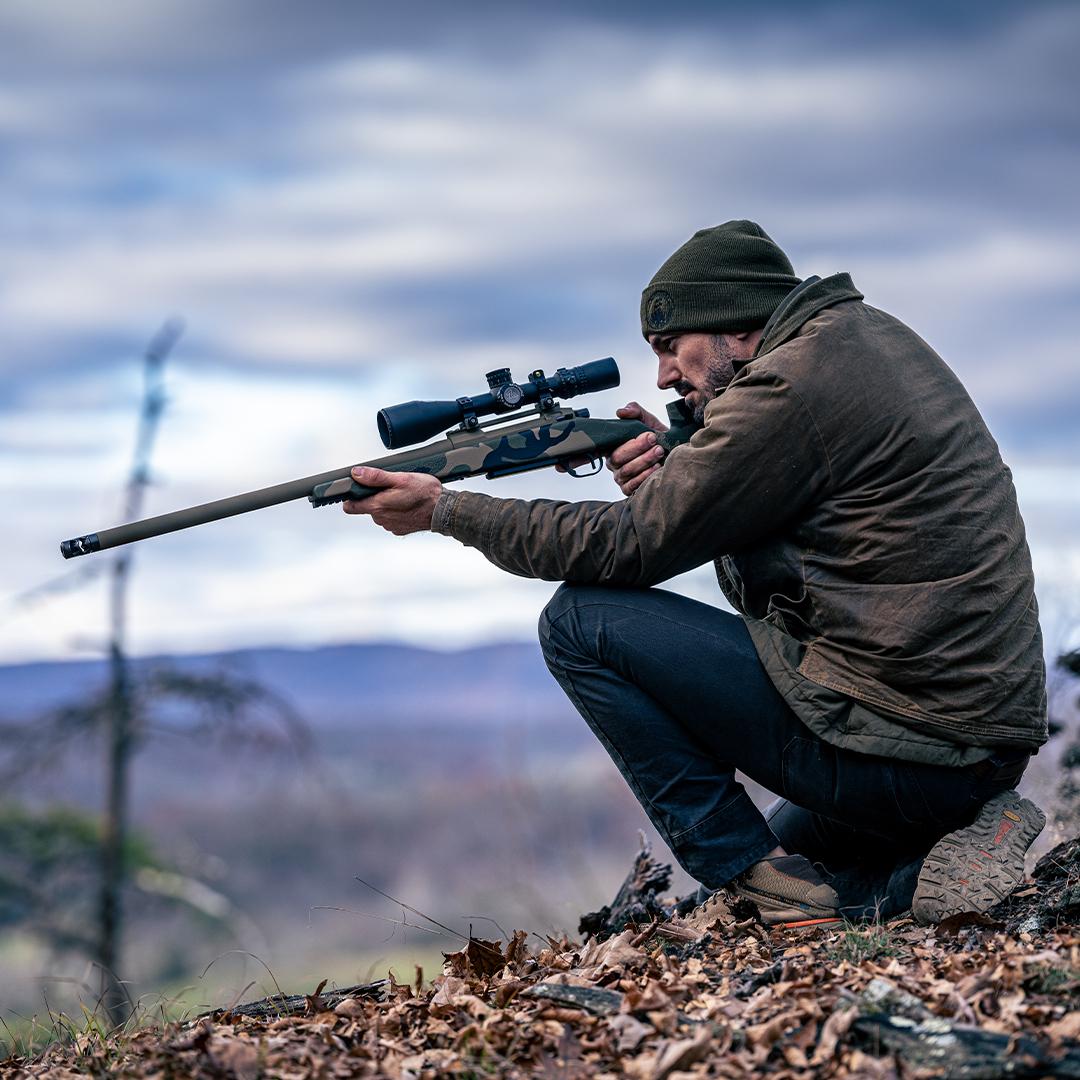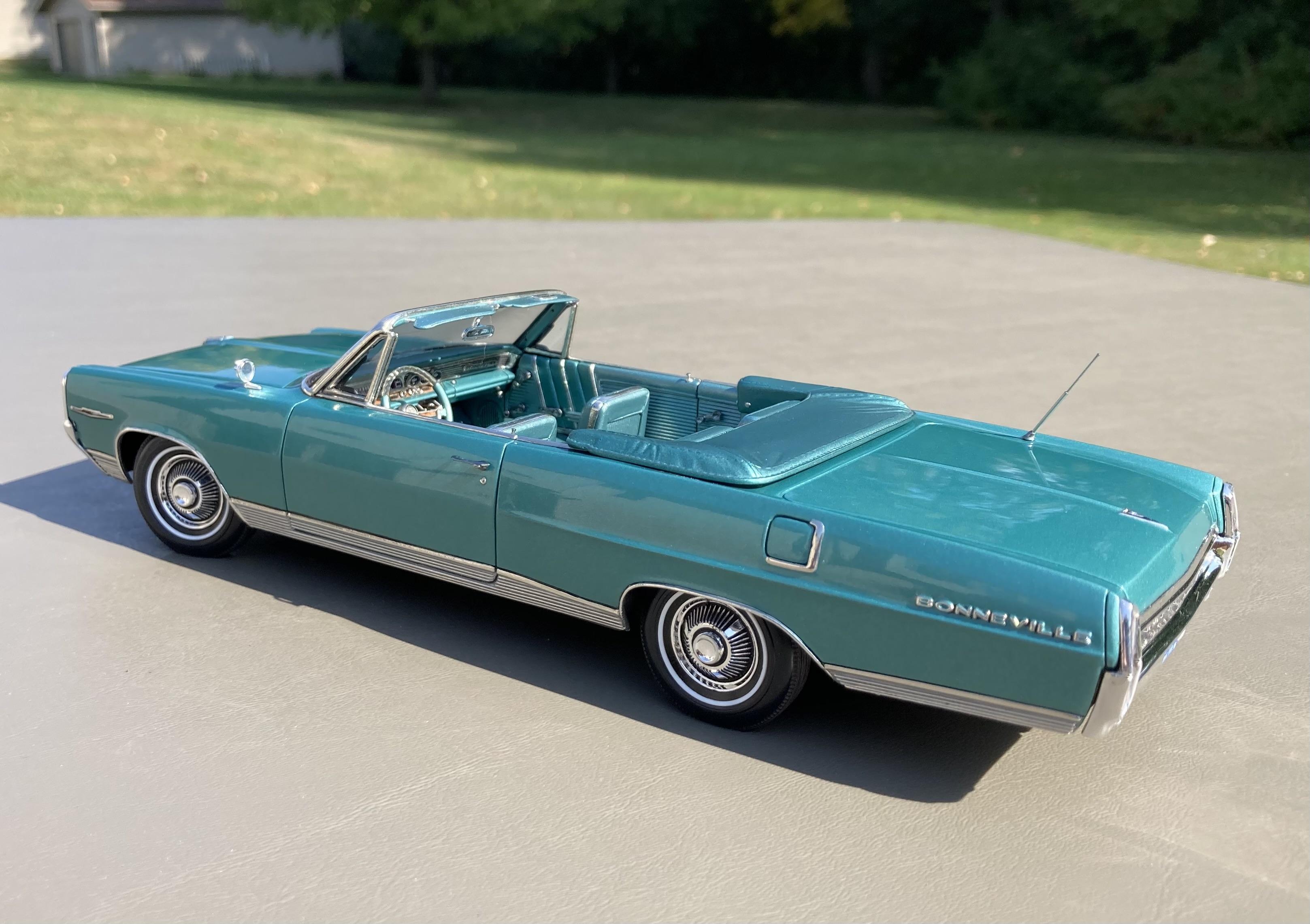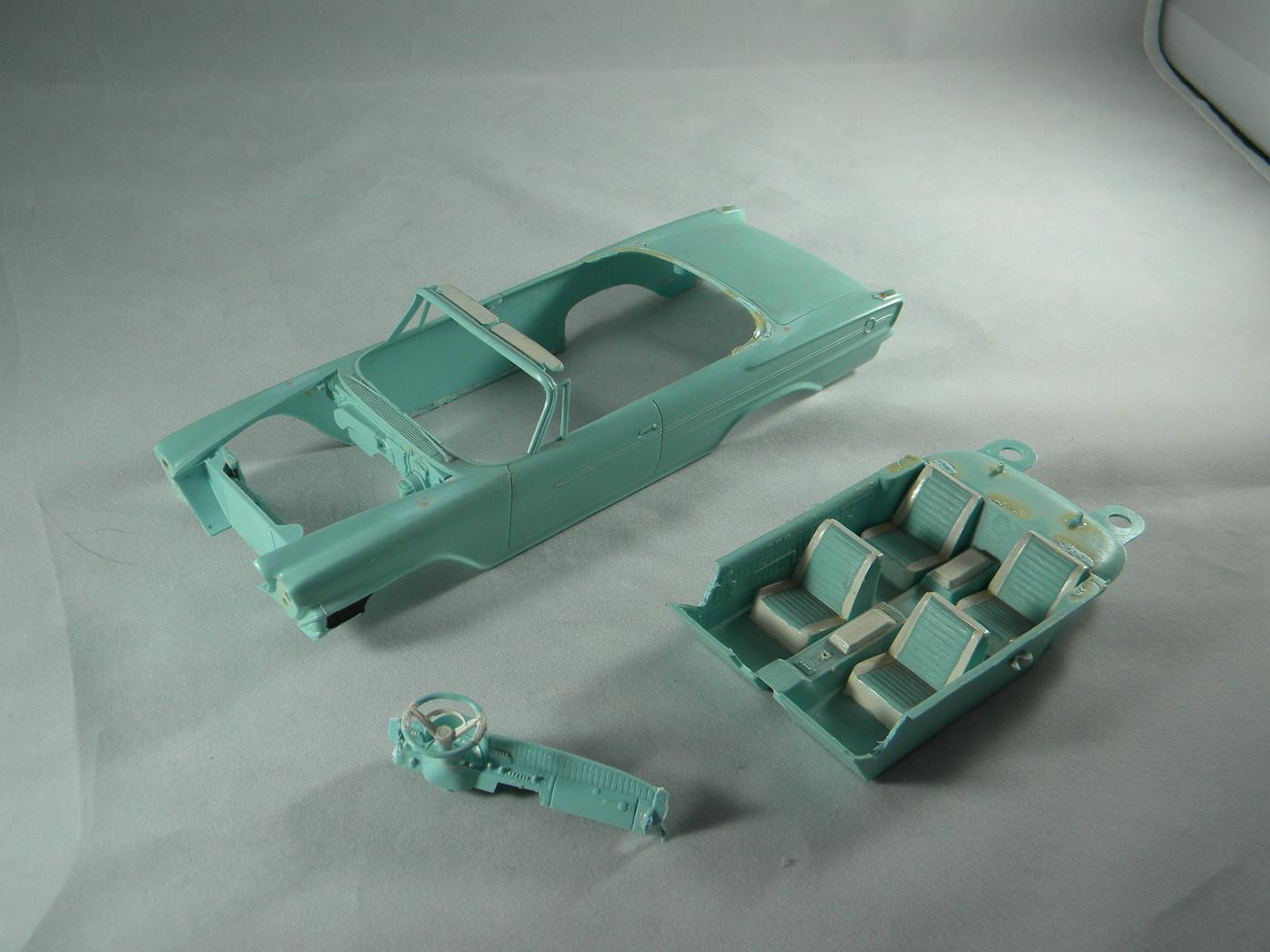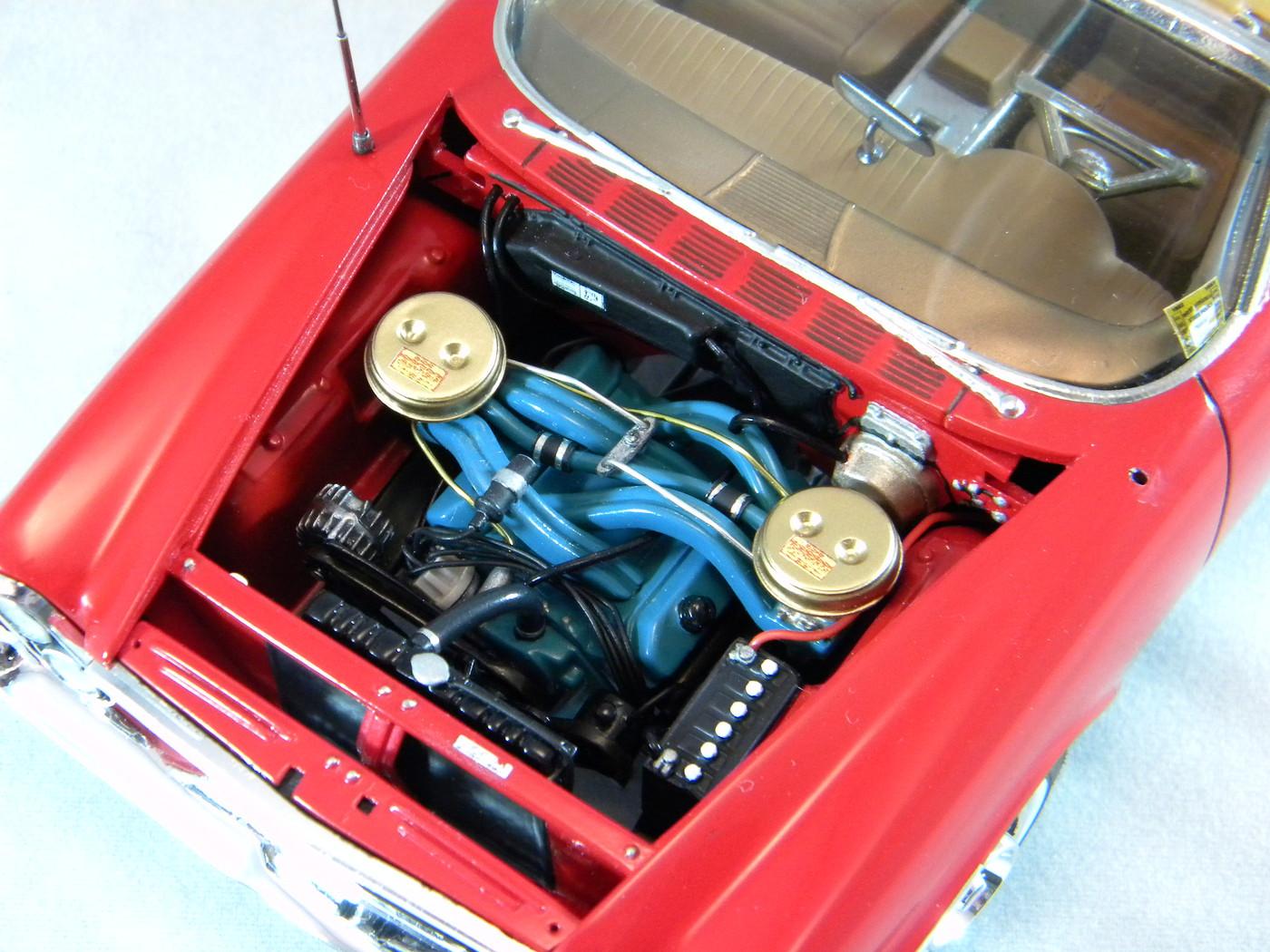-
Posts
15,071 -
Joined
-
Last visited
Content Type
Profiles
Forums
Events
Gallery
Everything posted by StevenGuthmiller
-
No, he doesn’t have a remote start. I’ve seen him come out to start it. it’s a beat up rusty old 90s Dodge with a loud muffler. I can understand letting it run for a while when it’s 10 below zero in the middle of winter, but right now, it’s in the 60s in the morning. No need for heat or air conditioning. Steve
-

in need of a lechler paint code
StevenGuthmiller replied to stitchdup's topic in Model Building Questions and Answers
What year is the paint from? the “Gunmetal” name has been used over and over again for probably dozens of colors. I only see “Gunmetal Gray” in the chip sheets for 1936, no gunmetal blue. Steve -

My sister passed her flying test an hour ago
StevenGuthmiller replied to stitchdup's topic in The Off-Topic Lounge
“Aim High”. Steve -
Because he's an A-hole? But seriously, yes, he is a lawn freak, but I suppose that would be expected as he owns a lawn care business in the twin cities, but he's the boss, so any work he's doing is from home. He has free time up the wazoo and spends a good portion of his afternoons on the golf course. I see him milling around doing all sorts of things during the day when he's not golfing.......except mowing his lawn! An electric mower? That's hilarious!! He has a lot half the size of ours, so probably a half acre or less, and he has a push mower, 2 lawn tractors, and a zero turn mower. If it doesn't run on gasoline, this guy doesn't own it! Including his snow mobiles, side by side ATV, and even his mosquito sprayer, which he also likes to drag out a couple of times a year......at dusk!! This is the conundrum. Minnesota nice rules the day, so I'm not sure what the other neighbors think of the barking dog. In that same vane, who wants to be the one who calls the cops? The noise is aggravating, but is it to the point of creating bad relationships in the neighborhood? Probably not. I suppose you could say that I value quiet less than a war with a neighbor that I barely even know. This is the one that I'm probably going to act on at some point. I don't know for certain what the codes are for operating off road vehicles within city limits, but my guess is that this will likely go nowhere as well as this is a small farming community where they bend over backwards for anything that you may be able to argue has a remote farming purpose, and a place where teenagers freely run their parents golf carts, dirt bikes and ATVs all over town on the city streets all summer long without anyone batting an eyelash. I know some of them, and others not at all. The ones that I do know, I barely know. The only one I know fairly well is my neighbor directly across the street, Steve, who is also a lawn fanatic, but a conscientious one. Never had anything at all to complain about with him. Some may know my name, and I'm positive some don't, such as the people behind me with the ATVs. We can't even see each others houses through the woods. In all honesty, I can't imagine why they would have anything to "gripe" about me. I don't have a dog, or ATVs. I mow my lawn once a week on average during the day like a normal person. I don't leave loud vehicles running to "warm them up" for a half hour when it's 80 degrees outside. I don't have parties or play loud music. We're quiet people who keep to ourselves and have enough sense to realize that what we do can affect those around us. We moved eight years ago to the very edge of what we had assumed would be a quiet, sleepy little town, and for the most part, it's been okay. But as time goes by it's beginning to become apparent that it's not as sleepy or quiet as we had hoped. I think it was just the luck of the draw that we seem to have situated ourselves between several narcissists, who don't really give a rats behind what people around them think. As I sit here typing this, the roaring ATVs in the tree line have again commenced! Steve
-
Most people do use one form of wire or another for pinning, but I've been using just plain old styrene plastic rod for pinning. Not as strong as wire, no doubt, but it hasn't shown itself to weak in my experience. I prefer the plastic because it's something that I already have in the shop for all sorts of other reasons, and I like to use a MEK glue to bond the pins to the parts for a solid bond. So far it hasn't proven itself to be an issue. By the way Greg, it would be possible to use a plastic pin in the '55 Chevy hood badge. Drilling a shallow "divot" in the backside of the badge and then gluing a plastic pin into the divot with a plastic cement will fuse the parts as one and at least allow for easier location of the part. Steve
-

Paint help
StevenGuthmiller replied to Maurice Henderson's topic in Model Building Questions and Answers
Obvious adhesion problem, but I don't use Tamiya paints or primers, so I couldn't give you any insight as to what the issue might be. I will say that I've been hearing of a lot more problems with Tamiya paint as of late, so take that for what you will. Maybe formula changes? I will also say that if the color coat is not "biting" into the primer, it's not doing what it should be doing as a "lacquer". Sanding the primer shouldn't be necessary if the paints are acting as they should. I use Duplicolor primer, followed by various automotive type lacquers. Sometimes I may sand the final primer coat should it need it, but I often do not, and I never have any sort of adhesion problems because the lacquers that I'm using have sufficient solvent strength to etch themselves into the primer giving a sufficient bond. That said, Rick is also correct that many masking tapes are far too aggressive and have a tendency to pull up paint when removed. Use a lighter tack tape to avoid this. Not only will Tamiya tape be less aggressive and less likely to cause issues, but it will give you a much cleaner edge for two toning when applied properly. Steve -

Revell 1971 Olds 442 W-30 done in Sienna Brown Metallic.
StevenGuthmiller replied to Dragonhawk1066's topic in Model Cars
My kind of color! something other than the usual. Steve -
At least you have some illegalities that you can report to law enforcement to possibly remedy the situations. The town cops are going to ignore me if I complain about barking dogs or idling pickups in the early morning. I don’t think I have much recourse aside from direct confrontation which will probably just make things worse. Steve
-
Of course there are circumstances where it’s better to paint parts prior to assembly, even if they are the same color as the body. Although it might seem impractical or difficult to pin some parts, it can be possible with care and small enough bits. The Fireball door handles that I posted in an earlier post are a prime example. Not an easy operation due to the part size, but entirely possible. Steve
-
Absolutely! sometimes it’s a much better alternative for small, difficult to position parts, even if they come plated. Small example is the fuel door molding that I fabricated and added to my ‘64 Bonneville. Not only would it have been impossible to pin, but accurate positioning would have been extremely difficult. Steve
-
.....Or am I just getting old and cranky? I love having my windows open when the weather begins to get nice, and in this part of the country, it's a pretty short period of time. I love hearing the sounds of the birds singing and the frogs croaking in the spring, and the crickets in the fall, and the sounds of children playing, and just the "normal" sounds of summer life in a small town are all so very welcome. But it's becoming increasingly difficult to withstand the inconsiderate and unnecessary racket coming from a number of my neighbors, that continues to drive me up the wall, ALL SEASON LONG! My next door neighbor has a penchant for deciding to mow his lawn late in the evening, (like 8:30 or 9:00) when everybody else in the neighborhood is expecting to be able to wind down and enjoy a little peace and quiet for the night, and this is a normal occurrence several times a week! My neighbor across the street has a son with a loud diesel Dodge pickup who feels the need to start it up and let it run in the driveway for a minimum of a half an hour, early every morning, and often other hours of the day as well. 😣 There's also another neighbor who lets his dog out early in the morning who then proceeds to sit and bark INCESSANTLY for the entire time. (sometimes an hour or more) Another neighbor has cleared some of the brush out of the wood line directly behind me to create a "track" so that his kids can run their four wheelers back and forth, and back and fourth, and BACK AND FORTH, for hours upon hours, nearly every day, ALL DAY LONG!! ☠️ Is it just me, or have people lost all consideration for the people around them? Anyway..... Excuse my rant, but the wife and I are considering a move when we fully retire in a few years, and I'm not going to miss ANY of them!!! When we consider where our next residence will be, the "absence" of annoying neighbors is going to be a HUGE factor!! Steve
-
I agree with Bill. It's a more advanced alternative, and it can sometimes require that you do the pinning and drilling of parts early in the process prior to paint, but it's going to give you the cleanest and most secure result. I use 2-part epoxy myself, but the type of glue used is far less important than the pinning. Steve
-

55 Chevy Bel Air Street Machine 2N1.
StevenGuthmiller replied to Oldschool297's topic in Model Building Questions and Answers
A more relevant question would be, "has anyone NOT built this?" I couldn't tell you for certain, but it could very well be one of the very first kits that I ever did back when I first started building in the 70s. I'll echo what Bob said about the body proportions compared to an actual '55 Chevy, but my memory from when I was 10 tells me it was a pretty cool kit, at least for it's time. Of course it's no competition when comparing it to a modern kit, but it can certainly still build into a pretty cool looking drag car. Just be aware of what it is, and don't be one of the "model kit whiners" that expects every kit to be a modern engineering marvel once you open the box.......Please!! Oh, by the way. I don't know what the "2 in 1" thing is all about. It builds into either a gasser, or a gasser. Steve -

Who's used Scale Finishes paint?
StevenGuthmiller replied to Dave Toups's topic in Model Building Questions and Answers
Certainly. I’m not suggesting anyone change their paint regimen either. Just offering my opinion on the product in question as this is a thread about Scale Finishes paint. Nothing more. Steve -

Who's used Scale Finishes paint?
StevenGuthmiller replied to Dave Toups's topic in Model Building Questions and Answers
Of course. You do you. I just don’t want anybody to get the impression that Scale Finishes paints are somehow an inferior product. The discovery of MCW and Scale Finishes products was a true epiphany for me! The ability to easily access any factory correct color in a premixed, ready to use form, saves me the time and aggravation of either having to try to find it in a spray can, or trying to duplicate it myself for airbrush. I routinely take many months to complete a project, so cost is all but meaningless to me, as I rarely paint more than one or two projects in a 12 month period anyway, and it’s more important to me to have an accurate representation of the chosen color than it is to save a couple of dollars. Acrylic paint is nearly foreign to me as I use lacquer exclusively for bodies, and mostly enamels for everything else. I’ve never felt the need to make the transition to acrylics, and most likely never will. Steve -

Who's used Scale Finishes paint?
StevenGuthmiller replied to Dave Toups's topic in Model Building Questions and Answers
You probably got a bad bottle. Hardly a reason to impugn an entire product line. If you had contacted the proprietors, they would have been more than happy to replace the defective product free of charge. By the way, Scale Finishes does not manufacture the product. They merely mix and package DuPont automotive paints specifically for the hobby. It’s also not necessary to use Scale Finishes primer. As it’s simply an automotive lacquer, any good quality automotive lacquer primer will suffice. I use Duplicolor primer. Works just fine. Steve -

AMT ‘63 Buick Electra 225 convertible
StevenGuthmiller replied to jmk0303's topic in WIP: Model Cars
I like it….a lot!! But, if I could make one suggestion for the next time that you build one of these old screw bottom, annual style kits. Get rid of the radiator bulkhead with those horrendously ugly screw posts! It’s a relatively easy operation to cut it out and replace it with either a piece from another kit, or it’s pretty simple to make one from scratch from a piece of sheet plastic. You can then usually remove the screw plate, (flange) from the front bumper should you desire. But, in any case, getting rid of those homely screw posts from the radiator bulkhead makes a HUGE improvement in the engine bay appearance. Just as an illustration, here is a ‘62 Chrysler that I modified the radiator bulkhead on. You can see the predominant screw posts in the “before” shot, and how it looked after some modifications. It’s a vast improvement! Forgive my forwardness on this subject, but those posts have just become something that I can’t unsee anymore. I have to address them whenever they’re present on my projects. Steve









